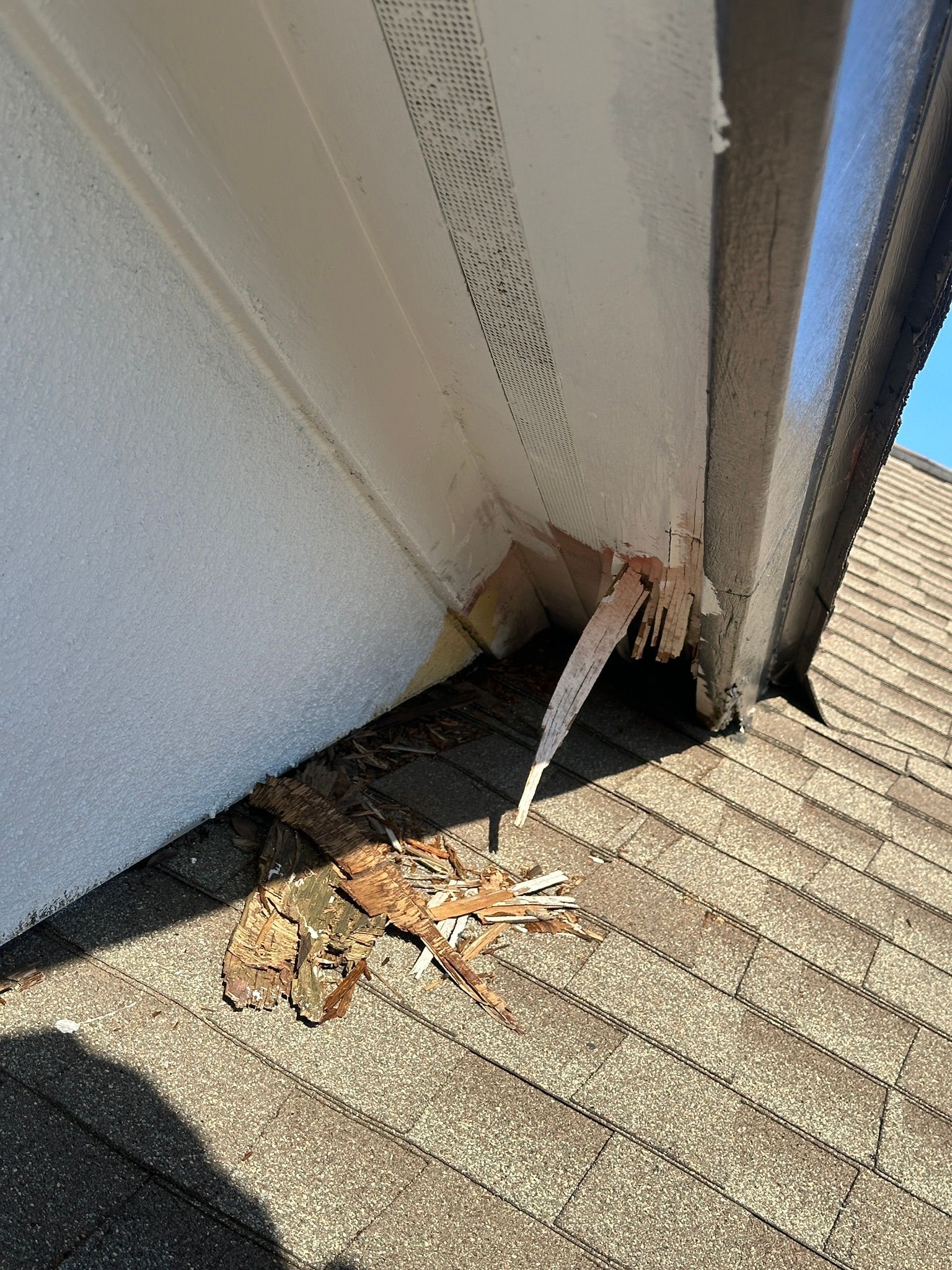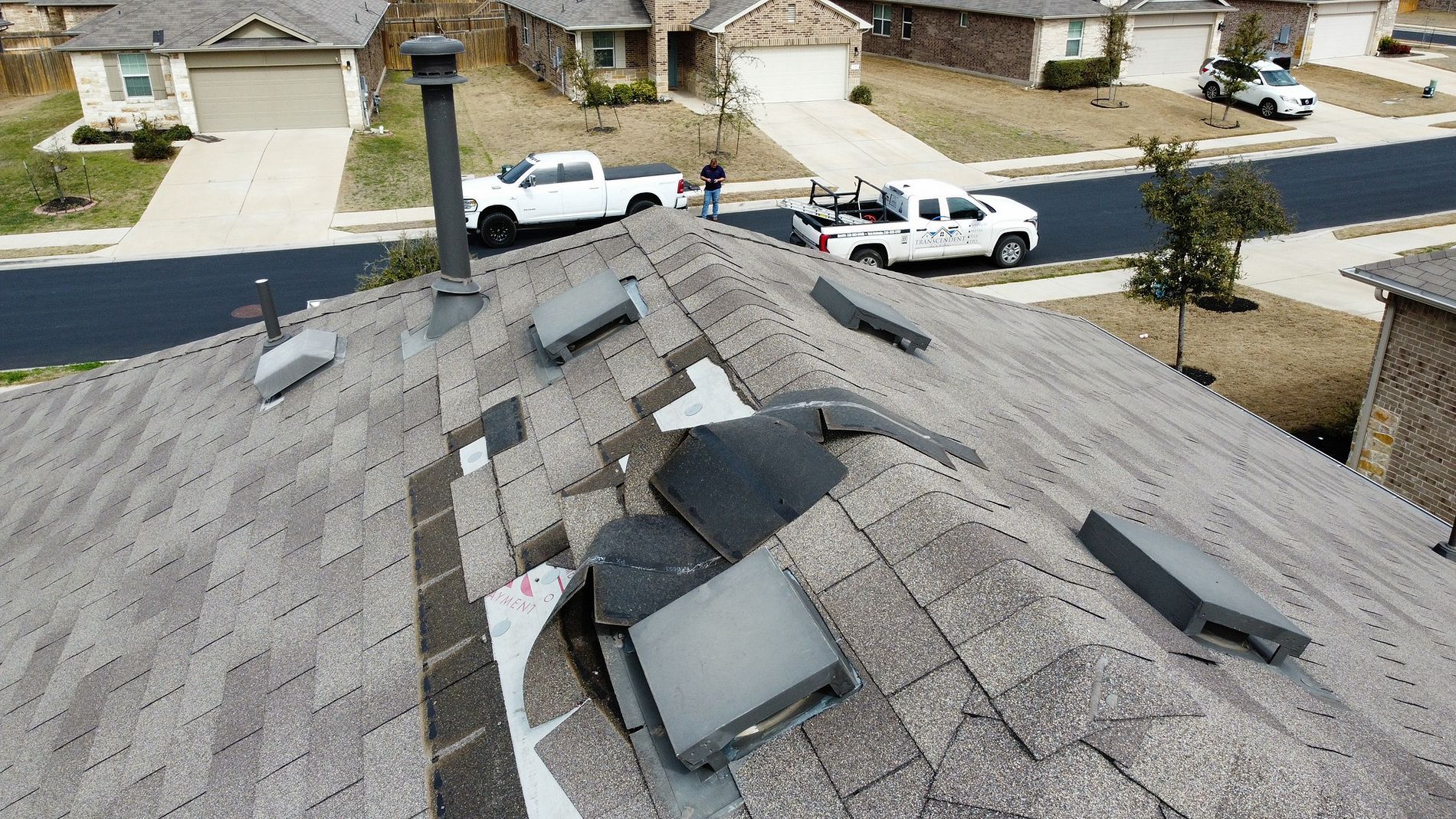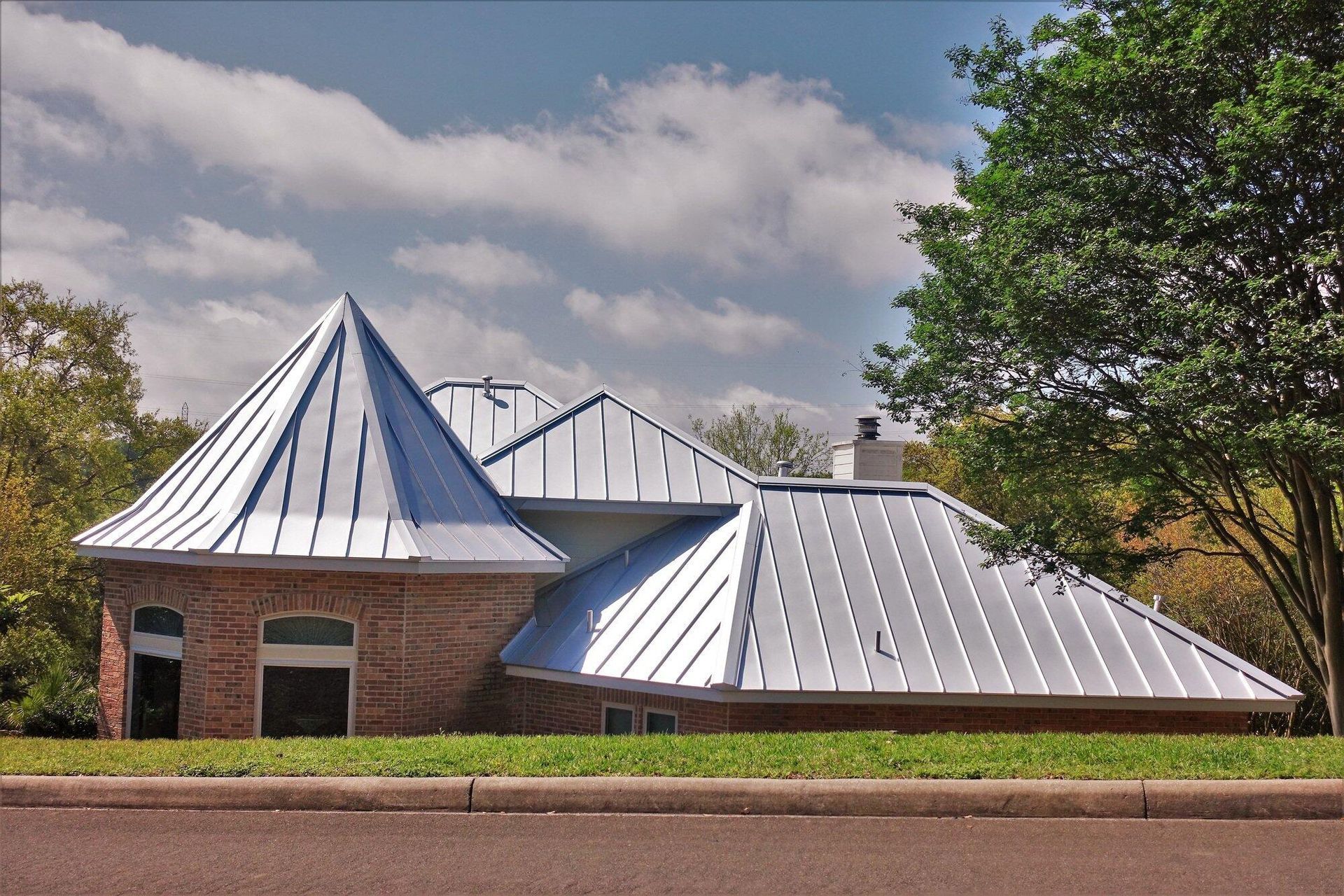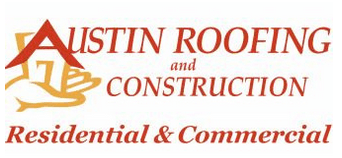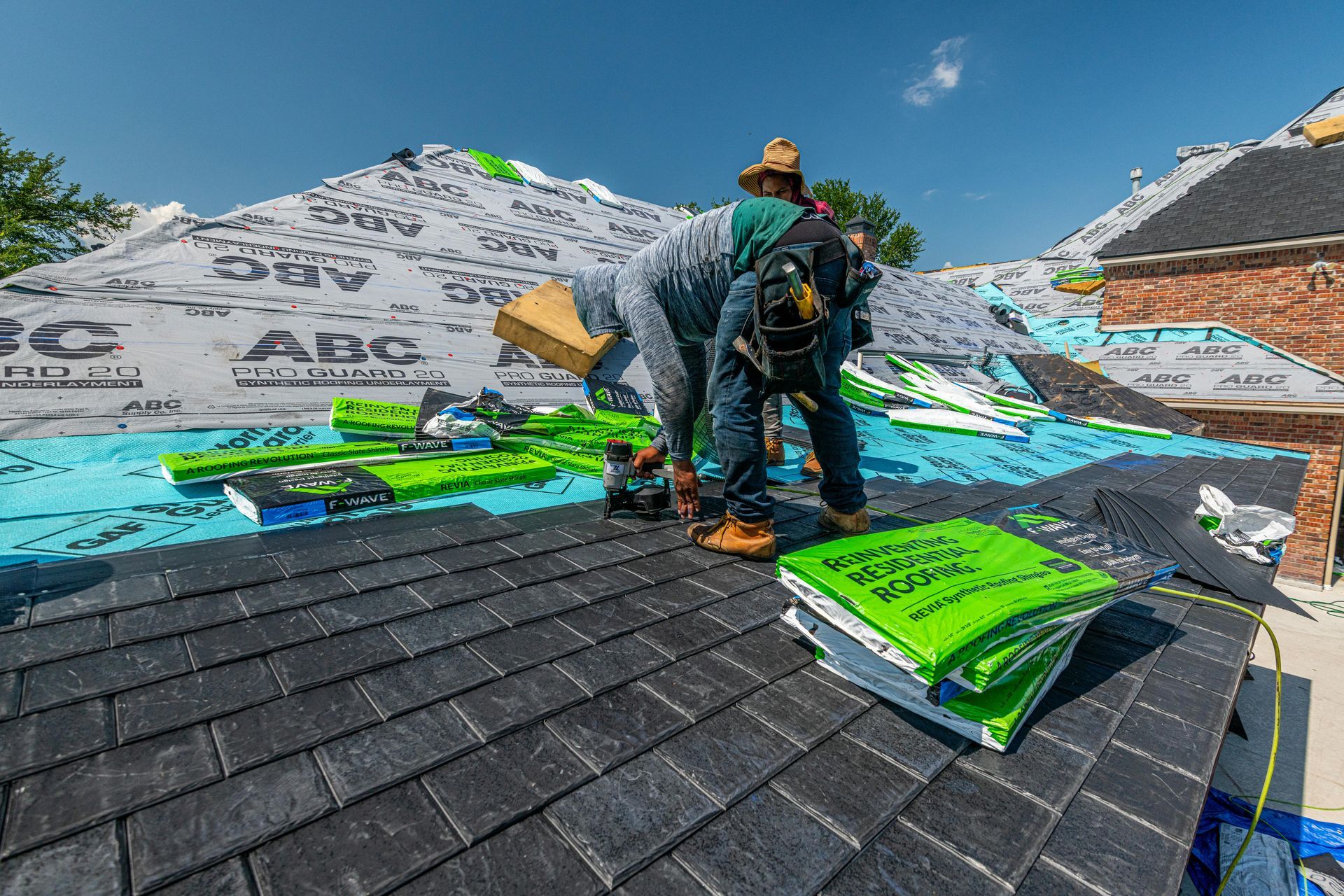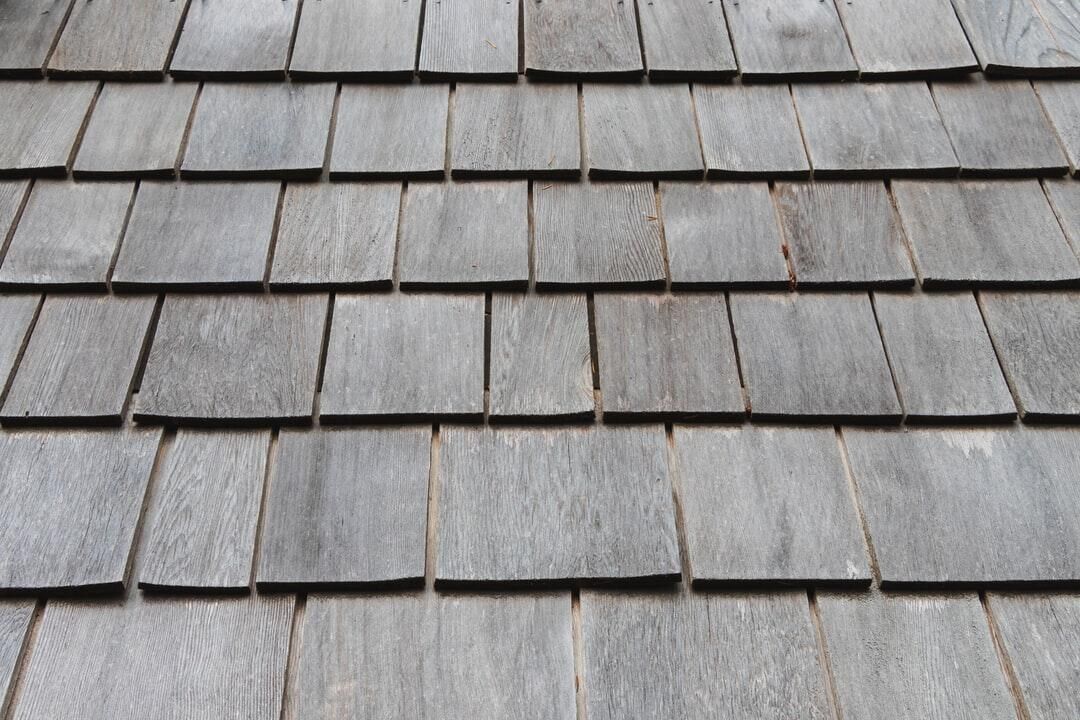Need a New Roof But Can't Afford It? Here Are Your Options.
The Money is everywhere - let us help
Usually, when you need a new roof, you need it right away, even if you aren't sure where the money for one is going to come from. Fortunately, if you can't afford to wait for a new roof, there are plenty of roof financing options that can help you get the roof you need right away.
Why You Need a Professional Roof Inspection Before Investing in a New Roof
Deciding on a new roof is a significant investment and undertaking, both financially and in terms of your home's longevity. However, before you embark on this journey, it's crucial to understand the underlying reasons a professional roof inspection should be your first step.
Holistic Evaluation of Roof Condition
A professional inspection provides a comprehensive assessment of your roof's current state. Experts can identify hidden issues like leaks, structural weaknesses, or damage from weather that are not visible to the untrained eye. Without this evaluation, you might overlook problems that can affect the new roof's performance.
Accurate Budgeting and Planning
Knowing the exact condition of your roof helps provide an accurate estimate for your project. This includes potential repair needs or upgrades that might be necessary before installation. Planning your budget with this clarity ensures you won't encounter unexpected expenses down the line.
Ensures Safety and Compliance
Roofing standards and regulations can vary by location. Professionals ensure your roof complies with all local codes, which is crucial for safety and legality. Non-compliance can lead to fines or further costly modifications.
Informed Decision Making
With the detailed insights a professional inspection offers, you can make well-informed decisions. Whether to repair or replace, choosing materials, or determining the scope of work becomes clearer, ensuring you pick the best solutions tailored to your home's needs.
Prolongs the Life of Your New Roof
Implementing repairs and addressing issues before installing a new roof can prolong its lifespan. This proactive approach prevents problems that could compromise the new roof, providing peace of mind for years to come.
In summary, a professional roof inspection is an essential preliminary step, equipping you with the knowledge to make insightful decisions, budget effectively, and maintain safety throughout the roofing process.
Government and Community Grants
If you're exploring options to finance a new roof, grants are a valuable resource to consider. These are often provided by the government to assist specific groups, including low-income homeowners, retirees, and owners of historic homes. They are a fantastic way to alleviate financial strain because they generally do not require repayment.
1. Single Housing Repair Loans and Grants (Section 504 Home Repair Program):
This government-backed initiative assists low-income homeowners with necessary repairs, including roofing. It’s a blend of loans and grants, specifically designed to maintain safe living conditions.
2. Weatherization Assistance Program:
Aimed at improving energy efficiency, this program provides funds for weatherproofing your home, which includes updating or repairing your roof. Eligible applicants can reduce their energy bills while securing structural integrity.
3. Historic Home Grants:
If your home is of historic significance, various grants are available to assist with maintenance and restoration. Such programs ensure historic homes retain their original charm while meeting modern safety standards.
Who Qualifies for These Grants?
These grant programs target a variety of homeowners:
- Low-Income Homeowners: Those who meet specific income thresholds may qualify for grants aimed at essential home repairs.
- Retirees: Some programs are specifically designed to support retirees, helping them maintain their homes without financial burden.
- Owners of Historic Homes: If your property has historical significance, you might qualify for specialized grants that support preservation efforts.
The Advantage of Grants
One of the most attractive features of a grant is its non-repayable nature. Securing a grant resembles obtaining free funding, making it an ideal option if replacing your roof is financially daunting.
To explore further and determine your eligibility for these grants, review available resources such as government websites or local preservation directories. With the right information and applications, you could secure funding that eases the path to a new, secure roof.
FHA Title I Property Improvement Loans are a more traditional type of financing, but also must be used for home improvements, which the HUD says are anything that makes your house more usable and livable. The first $7,500 is unsecured, but any amount over that and up to the maximum of $25,000 is secured by a mortgage on the property. To qualify, your debt-to-income ratio must be 45% or less, and the maximum loan term is 20 years on a single-family home.
Key Features of Title I Loans
- Loan Amount: You can borrow up to a maximum of $25,000.
- Loan Term: The maximum loan term is 20 years for a single-family home.
- Secured vs. Unsecured: The first $7,500 is unsecured, meaning you don’t need to back it with collateral. However, any amount over $7,500 is secured by a mortgage on the property.
Eligibility Criteria
To qualify, your debt-to-income ratio must be 45% or less. This ensures you have the financial capacity to manage the loan repayments alongside your existing obligations.
Benefits
With the FHA's backing, lenders are more likely to approve loans for borrowers who may have been unsuccessful with other financing options. This insurance coverage provides peace of mind, knowing that there is less risk involved for both parties.
By understanding these elements, homeowners can better navigate the loan application process and utilize these funds to make significant improvements, enhancing the usability and livability of their homes.
Key Features of FHA 203(k) Loans
The FHA 203(k) loan is a government-backed mortgage designed to help home-buyers finance both the purchase of a home and the cost of its repairs or renovations. Here are the key features of FHA 203(k) loans:
1. Dual Purpose Financing
- The FHA 203(k) loan allows borrowers to purchase a home and simultaneously finance its renovation costs. This makes it ideal for homes in need of repair or modernization, as it simplifies the process by combining both expenses into a single loan.
2. Eligible Properties
- Owner-Occupied: The property must be a primary residence.
- Types of Homes: The loan can be used for single-family homes, multi-family properties (up to 4 units), and certain types of condos, provided they meet FHA standards.
- Eligible Repairs: It covers structural repairs, roofing, plumbing, electrical, HVAC systems, landscaping, and more. However, luxury improvements (e.g., swimming pools, outdoor kitchens) are not covered.
3. Two Types of 203(k) Loans
- Standard 203(k): For more extensive renovations, including structural changes or major repairs.
- Limited 203(k): For smaller projects, with repair costs capped at $35,000 (excluding the cost of the home itself). It is less paperwork-intensive and faster to process.
4. Loan Terms and Requirements
- Low Down Payment: Requires a minimum down payment of 3.5% for those with a credit score of 580 or higher.
- FHA Credit Requirements: Generally, applicants must have a credit score of at least 580 (though this can vary by lender).
- Mortgage Insurance: FHA loans require both upfront and annual mortgage insurance premiums (MIP), which are rolled into the loan.
5. Loan Limits
- The loan limits vary by county and are based on the area’s median home price. It can be higher in areas with higher housing costs.
- FHA 203(k) loans follow the same limits as other FHA loans, with limits generally ranging from around $320,000 to $1 million, depending on the location.
6. Repair Escrow Account
- For renovation funds, an escrow account is typically set up. The lender releases funds as repairs are completed. Typically, contractors must be paid in phases based on work completed.
7. Streamlined Process
- The Limited 203(k) loan offers a streamlined process for smaller repairs. This means less paperwork, faster approval, and fewer restrictions on the types of repairs.
8. Longer Repayment Period
- FHA 203(k) loans have repayment terms up to 30 years, which is the same as traditional FHA loans, providing a manageable long-term financing option for both purchase and renovation.
9. Mortgage Rates
- FHA 203(k) loans typically offer competitive interest rates, which can be lower than conventional loans, especially for buyers with lower credit scores.
10. Post-Repair Appraisal
- After the renovations are completed, an appraisal will be conducted to assess the value of the home with the improvements. This post-repair value is often used to determine the final loan amount.
The
FHA 203(k) loan is an excellent option for home-buyers who want to buy a home that needs repairs but don't have the funds for both a down payment and renovation costs. It simplifies the financing process by combining everything into one loan with flexible terms.
Insurance Coverage
Understanding the Process for Filing a Roof Damage Insurance Claim
When your roof sustains damage from a natural event, like a storm, your homeowners insurance policy might cover the necessary repairs. Here's a step-by-step guide to help you navigate the claims process smoothly:
Step 1: Assess the Damage
- Hire a Professional Inspector: It's crucial to have a roofing expert evaluate the extent of the damage. They’ll identify any issues and provide a detailed report.
- Gather Evidence: Take clear photos and detailed notes on the damage. This documentation will be essential when you speak to your insurance provider.
Step 2: Review Your Insurance Policy
- Understand Your Coverage: Check your policy's terms to see what types of damage are covered and any exclusions that may apply.
- Check Your Deductible: Be aware of your deductible amount to understand how it will affect your claim payout.
Step 3: Initiate the Claim
- Contact Your Insurance Company: Report the damage as soon as possible. Many insurers have specific timelines for filing a claim.
- Submit Documentation: Provide your insurance company with the inspector’s report and any evidence you've collected.
Step 4: Work With Your Insurance Adjuster
- Schedule an Inspection: Your insurer will likely send an adjuster to inspect the damage. This step is vital for them to assess the claim's validity.
- Communicate Clearly: Be available to discuss any additional details they may need.
Step 5: Approval and Repair
- Receive Approval: If approved, your insurance company will outline the next steps and any compensation you should expect.
- Plan the Repairs: Use the settlement funds to hire a reputable roofing contractor to perform the needed repairs.
By following these steps, you can streamline the claim process, ensuring it's efficient and transparent. Having professional documentation and staying organized will help maximize your claim outcome.
Check out our Insurance FAQ page.
Roofing Company Financing
Our roof financing options will get you the money you need for your roof in a timely manner. We are experts and realize that the cost of replacing a roof is beyond the means of most people to pay in cash, so we offer competitive financing options. You'll find lower interest rates, around 10 - 11%, depending on your credit score, financed for about 10 years with no prepayment penalties!
We can qualify just about anyone!
Financing your roof through your roofing company can be beneficial if you don't have a lot of equity in your home yet, or if you're having trouble qualifying for a personal loan. You'll get a loan term of between 10 and 15 years, which is better than most personal loans, which require full repayment in a shorter amount of time. Just make sure that the payments you'll have to make are within your budget, typically about $100 - $200 per month.
When to Consider a GoFundMe Campaign for a New Roof
Starting a crowdfunding campaign can be an effective way to gather funds for a new roof under certain circumstances. Here’s when you might consider this approach:
1. Medical Recovery
- If you or a family member are recovering from a serious illness or accident, financial burdens can quickly escalate. During such times, raising money through a GoFundMe campaign can help cover the costs of essential repairs like a new roof.
2. Unexpected Disasters
- Home emergencies such as fires, floods, or storm damage can leave your roof in a dire state. When insurance falls short or doesn't cover the entire cost, a crowdfunding campaign can be a lifeline in these unplanned situations.
When Not to Choose Crowdfunding
It's worth noting that if your roof’s age is the main issue and funds are tight, other financing options might be more suitable. It's often recommended to explore loans, grants, and local assistance programs for general roof replacements that aren't tied to specific emergencies or medical needs.
By being strategic about when to use crowdfunding, you increase the likelihood of your campaign being successful and well-received.
Government Loans
The federal government offers two different types of home improvement loans that can help people with lower credit scores (about 500) obtain financing for home improvement projects like getting a new roof. FHA 203(k) standard loans require a minimum loan amount of $5,000 and involve obtaining a mortgage refinance that rolls the amount of the roof replacement into your new mortgage loan amount. The money you borrow must be used for your roof or another covered home improvement project.
Personal Loan
A personal loan is an unsecured loan from a bank or other financial institution that you can use for any purpose, including for getting a new roof. There are quite a few benefits for using a personal loan to finance your roof, including the fact that you do not have to put up any collateral to get one, they can typically be approved quickly, and they have lower rates than other financing options, such as credit cards.
A personal loan is an unsecured loan from a bank or other financial institution that you can use for any purpose, including getting a new roof. There are quite a few benefits to using a personal loan to finance your roof, including the fact that you do not have to put up any collateral to get one, they can typically be approved quickly, and they have lower rates than other financing options, such as credit cards.
How to Use a Personal Loan for Your Roof
- Application Process: Start by applying with your preferred lender. Once approved, you receive the funds necessary to pay for your new roof.
- Repayment: You then repay the loan in monthly installments. It's essential to understand the terms of your repayment schedule to ensure it fits your budget.
- Loan Types: Personal loans come in both short and long-term options. Short-term loans require larger monthly payments, while long-term loans feature higher interest rates.
Considerations Before Applying
- Interest Rates: Personal loans often have higher interest rates than home equity loans or home equity lines of credit. Additionally, you cannot claim the interest you pay on a personal loan on your taxes, unlike some other financing options.
- Research: Be sure to research rates and terms with various lenders to find a loan that suits your financial situation. Thorough research can help you avoid unexpected costs and ensure that you're making an informed decision.
- Credit Score: If you have good credit, personal loans are an excellent option for roof financing, especially if you need a loan fast.
By carefully weighing these factors, you can determine if a personal loan is the right choice for financing your new roof.
Home Equity Loans
Use the equity in your home to pay for your roof. Equity is essentially the amount your house is worth minus what you owe on it. To get a home equity loan, you typically need to have about 20% equity, which may be difficult if you have just purchased your house. Additionally, this type of loan can take longer to finalize because you will need to get your house appraised before a lender will qualify you.
There are some benefits to using a home equity loan to get your new roof, though. For example, the term will usually be longer than that for a personal loan and you may have as long as 20 years to repay the amount you borrow. You should know that when you use a home equity loan, you are putting up your house as collateral, so if you fail to make timely payments, your house could be at risk.
Home Equity Line of Credit
A home equity line of credit or HELOC is another form of a home equity loan, but instead of requiring an application at the time you're taking out the loan, a HELOC is an amount of credit you have available when you need it. The lender places a credit limit based on the amount of equity you have available in your home. Then, you can use this line of credit as you need it, only repaying the amount you use.
How Does Cash-Out Refinancing Work as an Option for Funding a New Roof?
Cash-out refinancing can be a smart financial tool if you need funds for a new roof. Here's how it works:
When you choose cash-out refinancing, you're refinancing your current mortgage for more than what you owe. This allows you to pocket the difference. Essentially, you're taking advantage of the equity built in your home.
Key Benefits:
- Consolidated Payment: Unlike taking a second mortgage or a home equity loan, cash-out refinancing consolidates your payments. You replace your current mortgage with a new one—potentially at a lower interest rate.
- Access to Funds: By borrowing beyond your existing mortgage balance, the extra money can be used directly for home improvements, like installing a new roof.
- Competitive Interest Rates: This option often comes with favorable interest rates. If rates have dropped since you took out your original mortgage, you might even secure a better mortgage rate.
Ideal Candidates:
Cash-out refinancing is most beneficial for homeowners who have significant equity in their home and plan to stay put for some time. Also, it's a particularly appealing option if you can secure a lower interest rate than your current mortgage.
Remember, while cash-out refinancing can provide the cash flow you need for essential improvements, it's crucial to ensure that the new mortgage terms align with your long-term financial goals.
Credit Cards
While credit cards may not be the best option for financing a roof, they are an option and one that is usually readily available when you need to finance something quickly. If you know that you'll be able to pay off your balance in a year or less, you may consider opening a new credit card that offers an introductory rate of 0% interest. This will allow you to pay for your roof without paying any interest at all.
Of course, credit cards vary greatly in terms and interest rates, so be very careful with this type of financing. To get a 0% introductory rate, you'll have to have excellent credit. If your credit is not great, you may end up with an interest rate that will make the roof much more expensive than it needs to be. Moreover, if you miss a payment on a 0% introductory rate, your terms will usually revert to a standard interest rate.
Other Considerations
The amount you finance is likely the biggest factor in the type of financing you get. For example, if you only need to finance a small amount to meet your deductible, a credit card might make the most sense. However, if you have a larger amount to finance, which is the case for most people who have to have their roof replaced, one of the other options with longer terms and lower interest rates is a better choice.
The cost of your roof is dependent on the condition it's in, the size of your roof, and the time of year in which you're getting it replaced. For instance, if you need it replaced in the winter, it's probably going to be more expensive. Before deciding which type of financing you're going to secure, get an estimated quote for your roof. This will help you determine which financing option is going to give you the best deal over time.
How Do the Materials Chosen for a New Roof Impact Its Cost?
When planning for a new roof, you'll quickly discover that the materials you select have a significant impact on the overall cost. Let's delve into the various factors at play in the price equation.
Variety of Roofing Materials
- Asphalt Shingles
Often the go-to choice due to their affordability, asphalt shingles are budget-friendly and widely available. They offer a decent lifespan but may not be as durable as other options in extreme weather. - Metal Roofing
While the upfront cost is higher, metal roofs boast exceptional durability and longevity, potentially saving money in the long run due to fewer replacements and repairs. - Slate Tiles
Known for their elegance and durability, slate roofs can last over a century. However, their premium price tag makes them one of the most expensive choices. - Wood Shingles
Offering a rustic look, wood shingles sit in the mid-range of the price spectrum. They require regular maintenance, and their susceptibility to fire might lead to higher insurance costs.
Factors Beyond Material Alone
- Installation Complexity: Materials like slate or tile demand more skilled labor, increasing installation costs.
- Longevity and Maintenance: Higher-end materials may offer longer lifespans with less frequent maintenance, balancing out initial expenses over time.
- Climate Suitability: Some materials perform better in specific climates, so choosing the right type can reduce repair costs.
Conclusion
In summary, while initial costs vary widely between materials, considering longevity, maintenance, and regional compatibility is crucial. Assessing these factors can help you make an informed decision that aligns with your budget and long-term goals.
Choosing Your Finance Option
Choosing your option for financing can seem complicated, but if you consider what is most important to you and the financing options you will qualify for, you can eliminate the choices that don't make sense for you. If you need to get financed quickly, skip the home equity options and the FHA 203(k) standard loan because they're going to require appraisals and underwriting time. Personal loans, credit cards, and roof company financing are much quicker in terms of approval.
If your credit score is a problem, then you either want to go through the government for a FHA 203(k) standard loan or through your roof company, which can get you qualified quickly at a decent interest rate. For borrowers who need a loan quickly and have a low credit score, your roofing company is clearly the best option, as you'll likely be approved at a fair interest rate more quickly than just about any other option.
Getting a new roof is not something you can put off for very long, especially if it's already leaking or falling apart. Luckily, there are numerous financing options available to you, no matter what your credit score is or how quickly you need financing.
Call Austin Roofing And Construction and we'll get the process underway for your new roof!


